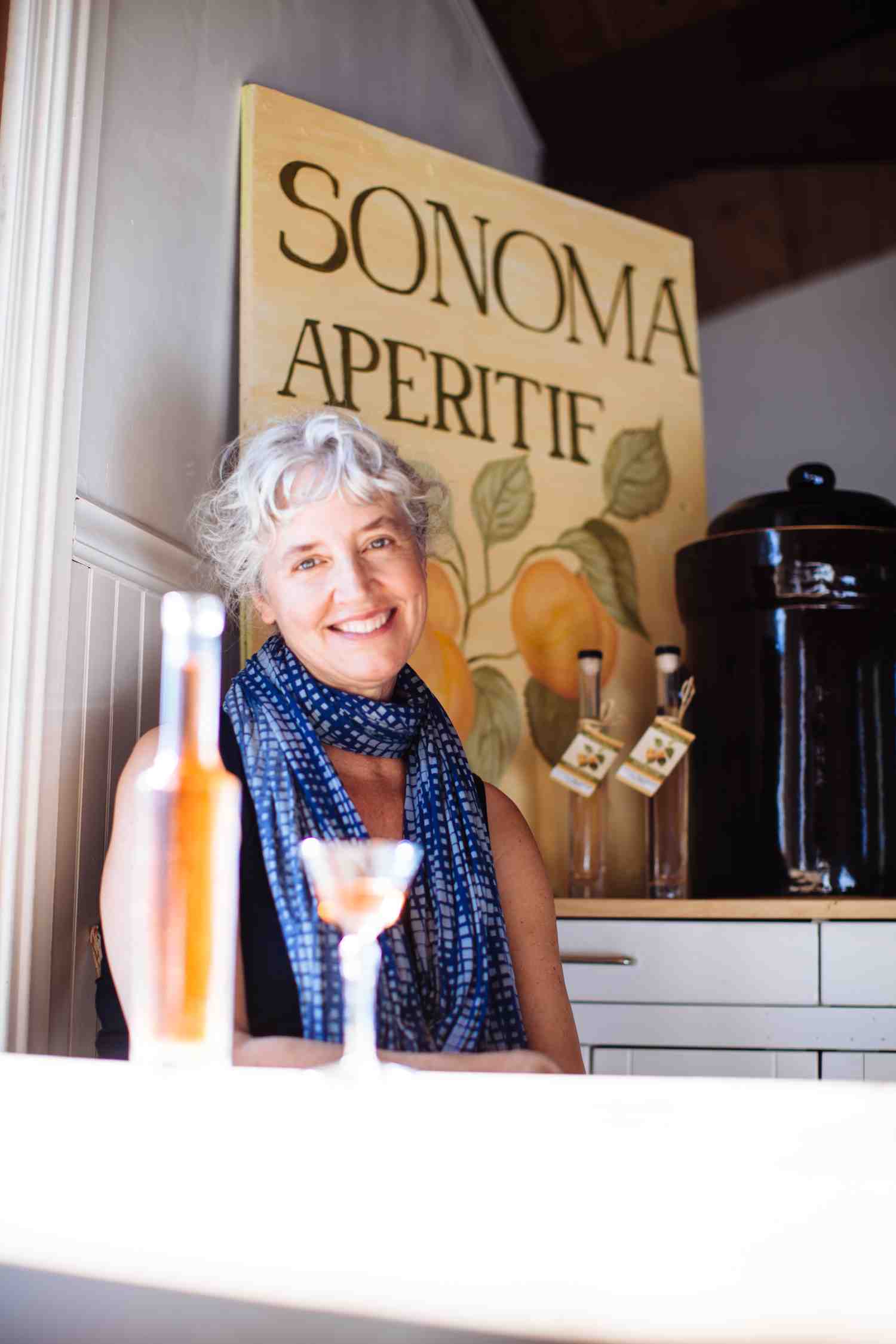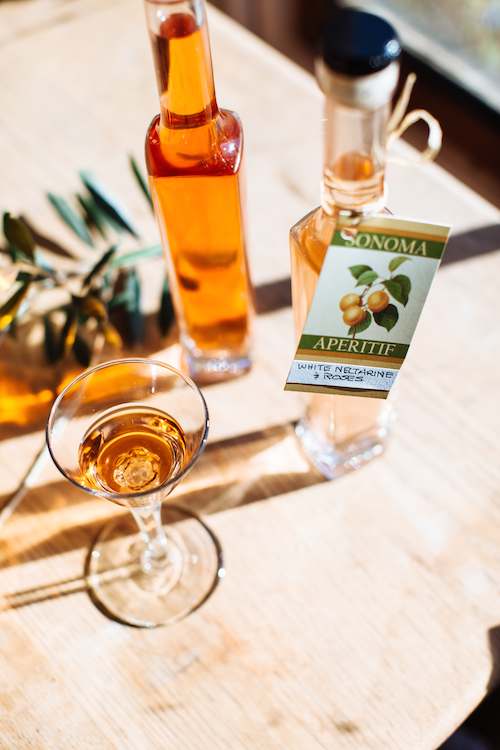Qu’est-ce Que C’est is an aperitif by any other name.
Those who wish to discipline the sexual organs should avoid drinking those concoctions which are called ‘aperitifs,’” warned Greek theologian St. Diadochos of Photiki sometime in the 5th century. The saint was naturally concerned that drinking before dinner might lead to debauchery thereafter. Taken from the Latin word for “open,” an aperitif may not be the gateway to undisciplined sexual organs but it assuredly is a lovely way to end one’s day.
In France, Spain, and Italy, where the tradition of a pre-dinner drink is widely embraced, the aperitif serves to mark an end to daylight concerns and as a welcome to the fascinations of the awaiting evening. Served with simple snacks to whet the appetite, the aperitif invites conversation and camaraderie.
The Europeans like their Lillet, Campari, Dubonnet, and Aperol. But before those commercial concoctions were available, all of them drank a dry fortified wine at day’s end. The original aperitif is a farmhouse blend that features good wine strengthened with a touch of spirits and a nice draught of infused fruit or flowers or nuts, usually those found growing just outside.
That is the kind of aperitif that Laura Hagar makes.
A former journalist for the East Bay Express and the North Bay Business Journal who now works as a web designer, Hagar was visiting a friend at his East Bay home a few years ago when he offered her a taste of the aperitifs he was making at home. Hagar politely sipped several of her friend’s offerings, making pleasant, encouraging sounds. And then he opened a citrus aperitif flavored with Bergamot.
“It was one of those transcendental wine experiences,” Hagar now says. “I had never tasted anything like it.” Hagar told the friend that he should try to sell his efforts. He wasn’t interested. “And I thought,” she smiles, “I could totally sell this.”
Armed with Georgeanne Brennan’s 1997 book, Aperitif, and an Internet connection, Hagar set out to learn more.
“This beverage was very popular in 18th and 19th centuries in America,” she explains. “Old cookbooks are full of recipes for it. I started experimenting and I ended up with some that are traditional, like vin de pamplemousse [made with grapefruit]. For others, I just sort of went into my backyard and my friend’s backyards and found fruit that I thought was interesting and put together recipes of my own—like white nectarines and roses. As a cook, my gift is to have a sense of interesting flavor combinations, so it was a natural when I applied it aperitifs.”
Renting the former Eagle Ridge Winery in Penngrove, Hagar decided to take her new enthusiasm and see it all the way through to production. Comically decrying herself as a “lose-focus kind of person,” she decided to trick herself into following through by purchasing 2,000 antique bottles for bottling. The trick, alas, was on her, as the size she purchased is not legal for her product. And in truth, dealing with the USDA and the various restrictions on her unusual drink has become a lesson she admits she’d rather not have learned.
Because her aperitif is based on wine but fortified with spirits—and most importantly, features the addition of fruit—it falls neither here nor there in the regulatory schema.
“The regulations are so hard to deal with, the complexity is really daunting, and it’s taken a really long time,” says Hagar, who began her road to production in January 2013 and is just now seeing the possibility of it becoming a reality. “Without them in place, I could have started this business with $3,000; with them, it’s going to cost me almost $40,000. More than 40 percent of my time is dealing with regulations—and I haven’t even broken any! It’s all about making sure that I don’t. It’s actually been quite mind-blowing.”
It was one of those transcendental wine experiences. I had never tasted anything like it. Laura Hagar
All set to call her drink Sonoma Aperitif, Hagar recently had to change tack. She can’t legally call it an aperitif, as the USDA defines that drink as solely boasting the addition of herbs and spices, not fruit. She is planning to name her production Qu’est-ce Que C’est?, French for “what is it?,” as a sly joke to the USDA.
Hagar sources her infusions from her vast rose garden, her own yard, friend’s trees, and a retired UC Davis citrus “station” whose caretaker is thrilled to have someone to whom he can offload his harvest.
Regulations dictate that she ferment 50 percent of the wine she uses as a base and she has found a winemaker to help her. Stillwater Spirits in Petaluma provides the hard stuff. She purchases the rest of the wines from Bottle Barn, trying to find the best base for her fruit.
“I have read advice not to use a good wine for this,” she continues, “and I think what they might have meant is that you don’t want a wine that’s elegant and austere because then it can’t stand up to the revision. I’ve bought some classic white wines and they were overwhelmed by the addition of the fruit and the hard spirits. They became floppy as a result. That’s the thing you would never want; these are supposed to be bright and lively.”
And indeed, Hagar’s Qu’est-ce Que C’est, with its floral notes, sparkling fresh fruit, and low perfume tones makes for a delightful mouth party—and the variations are seemingly endless. She uses green walnuts, most pear varieties, flowers, berries, stone fruits, the vast array of citrus. What hasn’t worked so far is melon.
“I tried cantaloupe and Crane melon and they tasted so revolting that I thought I had poisoned myself,” Hagar laughs. “I thought, ‘I’m going to die now.’ The thing about melons is that there’s that kind of acrid bite that’s wonderful in the context of the melon, but somehow, when I infused it, the main remaining flavor was that horrible acridness. I know that there are melon aperitifs but, there you go.”
With charming labels based on old botanical drawings, a funky old winery to use as a tasting room, and a good sense of what works and what doesn’t for her product, Hagar can see the proverbial light at the end of this particular tunnel.
When asked what her partner thinks of her efforts, she chuckles. “For most of the time, he thought that this was bound for total disaster. But, he has moved from ‘when this fails’ to ‘this might possibly work out.’”


